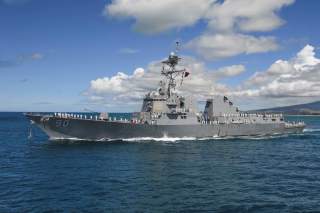Donald Trump's Big Trip to Asia: What Can Washington Do to Reassure ASEAN?
Trump has an opportunity to begin shaping Southeast Asia's geopolitical map in America’s favor.
As pressing as the Korean peninsula crisis is, North Korean denuclearization should not be at the top of that list of priorities. Rather, President Trump should lay out a vision for Southeast Asia that benefits Southeast Asians and Americans alike. That vision should have three key pillars:
- Over the long term, the United States should strive to shape a Southeast Asia that is at peace with itself and its neighbors and in which states can resist external coercion.
- The United States should seek to shape a Southeast Asia that embraces free market economics and is more deeply integrated with global trade and financial flows.
- The United States should seek to shape a Southeast Asia that, eventually, is a community of likeminded democracies in which human rights are championed.
In publicly committing himself to such a vision, President Trump can reassure ASEAN member states that, following on President Obama’s supposed and much-vaunted “return” to Southeast Asia, America is here to stay. He can convey to Beijing that turmoil in Korea does not present China with a strategic opportunity to its south. He can likewise provide impetus to his bureaucracy in Washington, which has thus far lacked strategic guidance—give appointees and career civil servants goals and they can start to put some meat on these strategy bones. During his visits to Vietnam and the Philippines, Trump can begin to do so as will.
Michael Mazza is a research fellow in foreign and defense policy studies at the American Enterprise Institute, where he analyzes U.S. defense policy in the Asia-Pacific region, Chinese military modernization, cross–Taiwan Strait relations and Korean Peninsula security.
Recommended:
Why North Korea's Air Force is Total Junk

